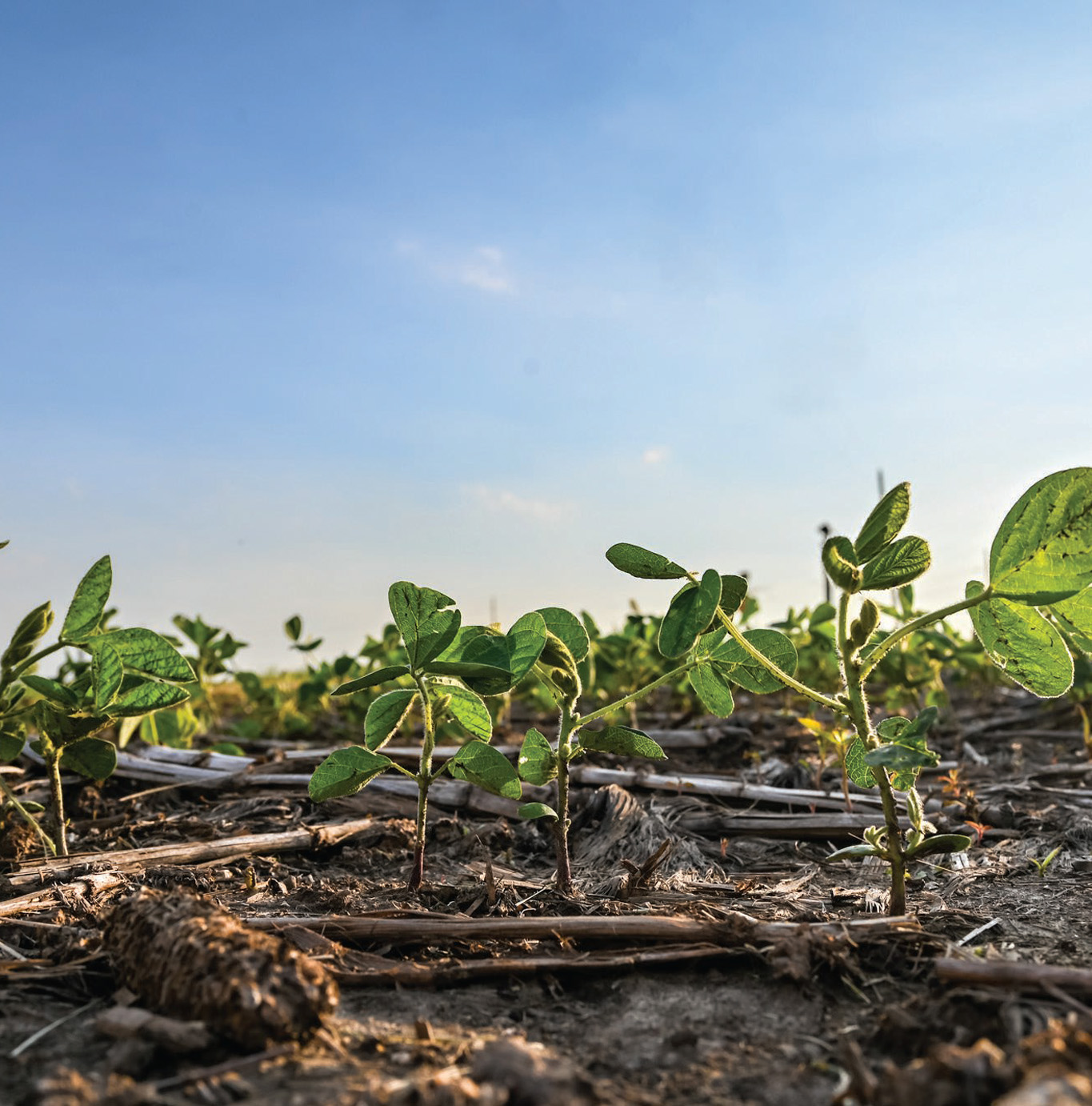By Stephen Censky, Chief Executive Officer, American Soybean Association
It’s no secret the pesticide tools farmers need to grow their crops productively and sustainably have come under attack in recent years. Misguided groups have not only successfully drummed up public fear around pesticides but also have leveraged those anxieties to fund and fuel campaigns against these tools in legislatures, regulatory agencies and the courts.
The fallout has been very real. In several instances, farmers have directly lost tools to court rulings and errant regulatory decisions. And activist efforts have, in some cases, created a culture of fear in regulatory agencies that if they do not concede to demands— regardless of whether those demands are supported by science—that these groups will use the courts to accomplish their objectives. This is clearly an unsustainable direction for continued access to pesticides by Illinois and U.S. farmers.
As despairing as these challenges may seem, there is hope. The American Soybean Association (ASA), Illinois Soybean Association (ISA) and other agriculture groups are pushing back and developing a new strategy that can help level the playing field.
Lessons from Chlorpyrifos
When the Environmental Protection Agency (EPA) banned the popular insecticide chlorpyrifos in 2021, U.S. agriculture was shocked and outraged. Less than a year prior, EPA’s scientists made a finding that at least 11 high-benefit uses of chlorpyrifos could be safely maintained, including uses for soybeans. However,
in response to a court ruling in a lawsuit brought by activist groups seeking to ban chlorpyrifos, EPA opted to prohibit all further use of the product. ASA, Illinois Soybean Growers and numerous other groups promptly sprang into action, filing objections to EPA’s decision, which the agency quickly dismissed. It became clear that if agriculture wanted to keep this product, so important to dozens of U.S. crops, we would need to adopt a more proactive approach.
In early 2022, a coalition of 20 grower organizations—including those representing soybeans, sugar beets, wheat and cherries—filed a lawsuit against EPA challenging its decision to ban chlorpyrifos. We argued it was inappropriate the agency could, on one hand, reach a finding that chlorpyrifos uses could be maintained safely and then, on the other, ignore its own science and ban all uses regardless of that science. After more than a year of drafting farmer declarations, filing briefs and engaging in oral arguments, the court agreed: EPA had broken the law, arbitrarily banning the product without considering all the science and data available.
This was a huge victory for U.S. agriculture in support of a science-based regulatory system. We defended successfully a tool many farmers rely on to protect crops from devastating insect pests. Many farmers had limited or no other crop protection options. More than that, the ruling provided a new model. What if we could partner with other like-minded grower organizations in building these coalitions to push back on agency overreach and activist groups moving forward?
Challenges with Legal Advocacy
There are good reasons why agricultural groups have not historically engaged in legal advocacy. First and foremost, it can be expensive. Retaining legal counsel to file a lawsuit and argue it before the court can cost millions of dollars. Activist groups can finance their activities by launching fundraising campaigns, tapping into hundreds of thousands of donors who, though well intended, have often been misled by mistruths about pesticides. These groups have had decades to build fundraising lists and establish their war chests, which now fund successful, well-oiled litigation machines.
Agriculture groups have not been intuitively postured to take the same approach. Farm groups usually represent one group of producers in a certain geographical area and do not have the broad, borderless reach that activist groups do. Further, agriculture groups advocate on a broad array of policies, not just pesticides. Those other policies, such as the farm bill or transportation legislation, largely take place in the legislative and regulatory space. Pesticide policy also has legislative and regulatory components but in recent years has overwhelmingly moved to the courts.
A clear pattern has emerged. EPA will make a regulatory decision and, as with chlorpyrifos, if activist groups disagree, they will promptly challenge the decision in court. Pesticide companies frequently try to help EPA defend its decisions, but farm groups have not been equipped to consistently participate, largely because of resource constraints. Agriculture groups are thus often on the sidelines as spectators while EPA either decides to side with the activists or risks being defeated in court.
The immediate impact is that sometimes quality regulatory decisions are undone by the courts, costing farmers both products and uses. The long-term effect has been that litigation-averse agencies understand they will be sued if they do not make certain decisions, resulting in even more regulations that are not based in science or that are unnecessarily averse to the needs of agriculture.
The choice is clear: if farm groups do not adapt and identify ways to better engage in pesticide legal advocacy, our fates will be decided for us.
Forging a New Advocacy Pathway
Chlorpyrifos taught us several crucial lessons. First, none of us are in this alone, and we are stronger together. While this insecticide was important to soybeans, it was also vital to numerous other crops and commodities. By building coalition networks early, we can partner with other like-minded groups that have an interest in defending these tools. We should also remember to look beyond agriculture. Many other groups use pesticides, including landscapers, golf courses and land management groups seeking to control invasive species. They can be important partners in mustering a common defense and can share additional perspectives with courts and policymakers that agriculture cannot.
A logical extension to building large coalitions to defend pesticides is sharing in the costs to protect them. The financial burden for one crop or one organization to defend a tool may be prohibitive, but many hands make for light (and less expensive) work. As with chlorpyrifos, we can share the expenses of legal advocacy, which allows us to overcome the cost barriers to participate in this essential, policy-shaping space.
It is not enough to learn these lessons. We must apply them—and quickly. Emerging regulatory perils such as recent Endangered Species Act proposals pose some of the greatest threats to farmer access to crop protection tools in a generation. ASA, ISA and others are engaging in a broad effort to put in place the coalitions and infrastructure needed to engage in robust legal advocacy if the situation demands it.
Herbicides and insecticides are indispensable to the productivity and sustainability of farming and other operations across Illinois and the U.S. Farmers need access to them to protect their crops from weeds and insects, as well as to implement conservation practices such as no-till and minimum-till that carry with them a host of other benefits. In partnership, we can rise to overcome the challenges needed to defend these tools and ensure they can remain part of the grower’s toolbox for many years to come. The American Soybean Association and the Illinois Soybean Association are leading the way.

Stephen Censky, Chief Executive Officer of the American Soybean Association
Recent Articles
TikTok sensation Jackson Laux, age 9, partners with John Deere to inspire agriculture's future.
By IL Field & Bean Team
From cutting-edge research to hands-on support, discover the vital role Extension plays in improving farm operations and advancing Illinois agriculture.
By Talon Becker, Commercial Agriculture Specialist, University of Illinois Extension


